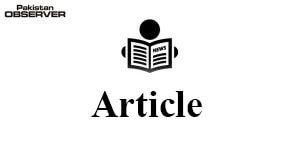Why Afghan forces melted so quickly ?
THE Taliban now control almost the whole of Afghanistan including the capital city, Kabul, almost two decades since they were driven out by US troops.
It was widely expected that after the United States complete withdrawal the Taliban will make significant territorial gains.
But no one expected that it will happen at that fast pace and 300,000 plus Afghan forces will melt so quickly in front of advancing Taliban, who followed a well-calibrated military strategy.
They started offensive with seizing large tracts of rural territory and then capturing key border crossings, at last, started to besiege provincial capitals.
But in this process, the Taliban didn’t encounter any stiff resistance from the government forces.
The Taliban is much stronger now than at any point since it was ousted in 2001. Currently, Taliban forces number up to eighty-five thousand full-time fighters.
But a valid question arises as to why numerically superior and more resourceful Afghan forces were not able to hold the Taliban.
At many places, Afghan army commanders contacted the Taliban and negotiated a safe passage for them, and handed over their equipment and armament to the Taliban.
The US has spent around $88 billion on Afghan security forces since 2001 but still they turned out to be a huge disappointment.
This astonishing military victory of the Taliban is more because of the weakness of Afghan forces rather than its own strength. Let’s have a look at some factors responsible for this outcome.
Highly Demoralized- Afghan military that over the past two decades was heavily dependent on US support for airpower, intelligence, logistics, planning, and other vital enablers was fatally demoralized by the US decision to abandon it.
In recent months, the Afghan military was finding it very hard to provide vital supplies such as food and ammunition to outposts scattered around the country.
Some Afghan units, particularly the elite special forces commandos, fought hard nearly to the end. But getting ominous indication, most troops chose to cut deals with the Taliban, surrender, or simply melt away rather than risk their lives for a hopeless cause.
Corruption: Some of the analysts blame the impotence among the military apparatus on the established corruption in the institution.
Public opinion and observers recognize the army as a deeply corrupt and inept organization, even lacking to provide enough food, ammunition and proper clothing to its servicemen.
Such ineptitude is said to be the main reason emboldening the Taliban to make advances against the government forces across the country and carry out fatal assaults against them and the public.
Sectarian composition of armed forces: The Tajiks occupy more top posts in comparison to their population against other ethnic groups.
For example, the presence of the Hazaras and other ethnic groups are smaller in size compared to their population.
Pashtuns are also included but a large number of Pashtun personnel are from the eastern areas of the country.
Only a small number of the southern Pashtuns who make up an ideological and ethnic base of Taliban are included in the armed forces.
Such an imbalance created mistrust and misunderstanding among different sectarian groups towards the army, making it look like a foreign force.
No clear military strategy: The country’s security apparatus, as a complex lacked security and strategic analysts to lay the foundation of a combat policy ahead of the Afghan policymakers.
To press forward against the militants using a well-studied defence programme, rather than just focusing on responding to insurgents’ attack, Afghan military strategists could have chalked out a proactive strategy that engages the enemy in their stronghold.
Weak Intelligence- Afghan forces required a robust intelligence collection and targeting capability to counter reinvigorated Taliban insurgency.
Afghanistan intelligence agency ie National Directorate of Security (NDS) not only suffered from an inability to share and disseminate actionable intelligence.
But also is plagued by the controversy of favouritism and nepotism and its ethnic composition dominated by Panjshir is Tajiks from Panjshir a group affiliated with the former Northern Alliance.
The NDS ethnic composition posed challenges to the intelligence agency’s ability to infiltrate the Pashtun groups most likely affiliated with the continued insurgency in Afghanistan.
Also, no attention was paid to increase more advanced voice intercept capabilities and cross-communication between the National Directorate of Security (NDS) and security forces in the field.
Even the fate of the previous Afghan army under former President Mohammed Najibullah was better than the current one.
Najibullah’s forces disintegrated due to deep ethnic and factional divisions, the absence of good leadership, and declining financial and technical support from the Soviet Union. But that downfall of forces took years but the current disaster even didn’t take months to happen.
For sure it was the US pullout that brutally exposed the shortcomings of the Afghan forces and precipitated the military’s collapse. But also timely corrective steps were not taken by the Afghan military leadership hence government forces met with such a disgraceful end.
— The writer is a political analyst for Middle-East and Af-Pak region and Editor of the geo-political news agency views around.










